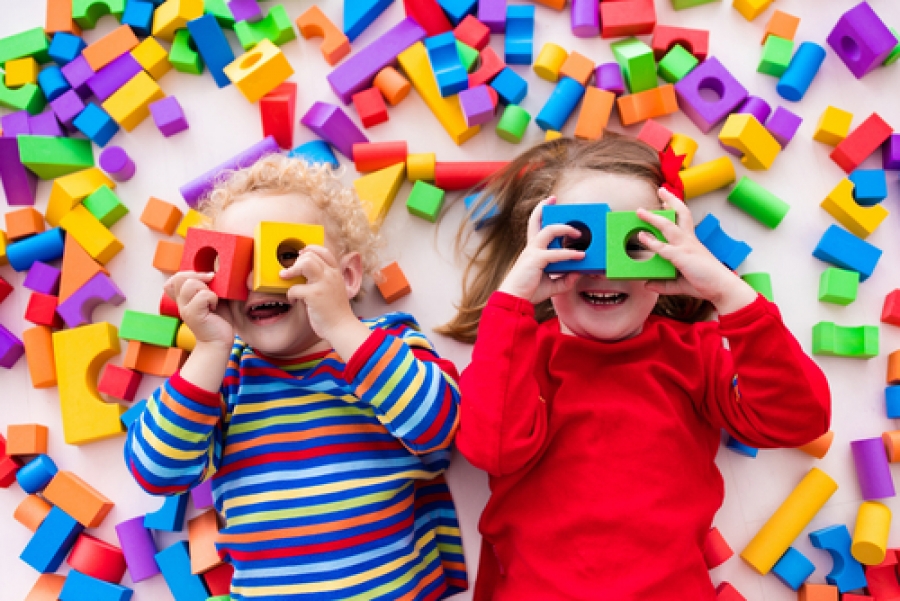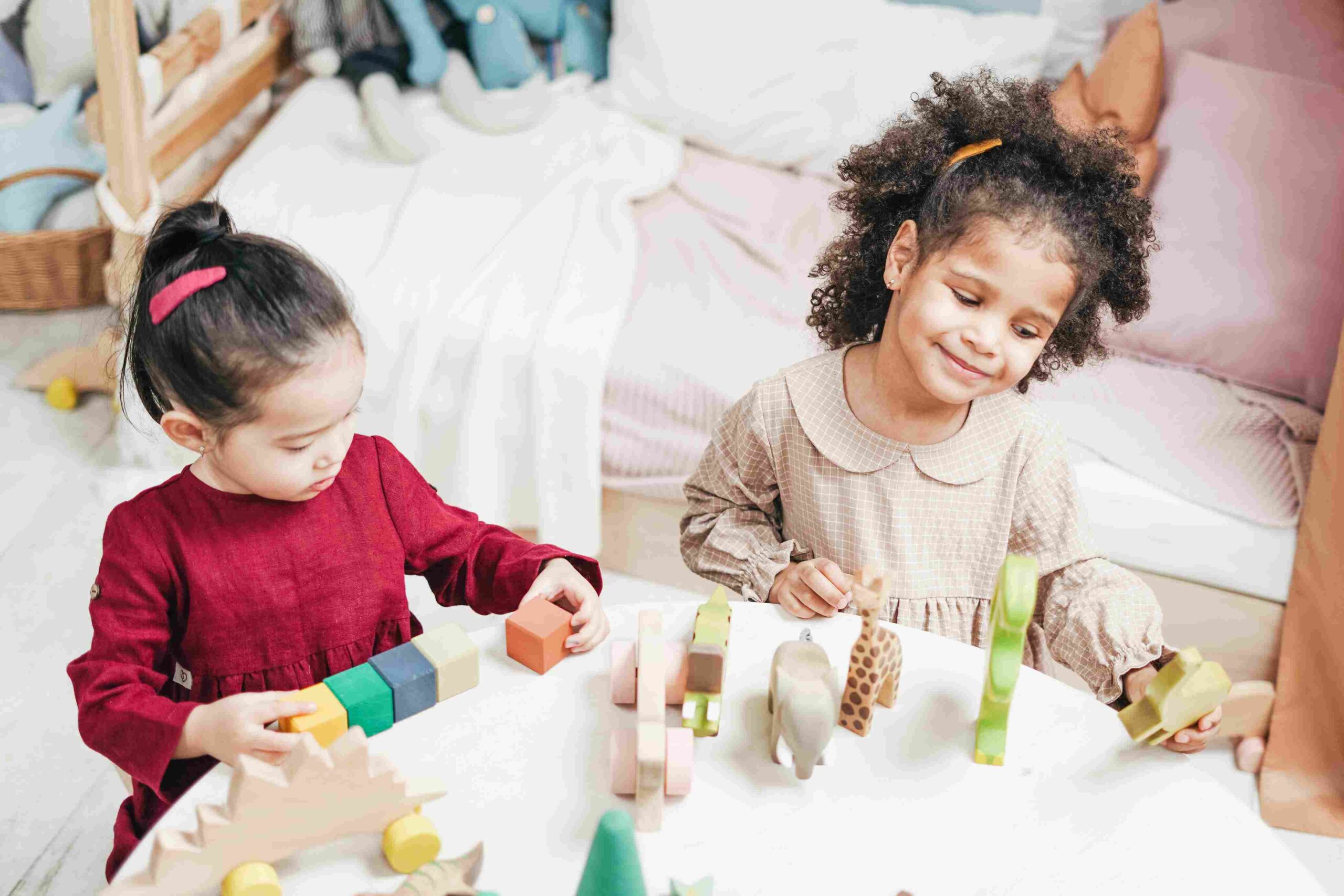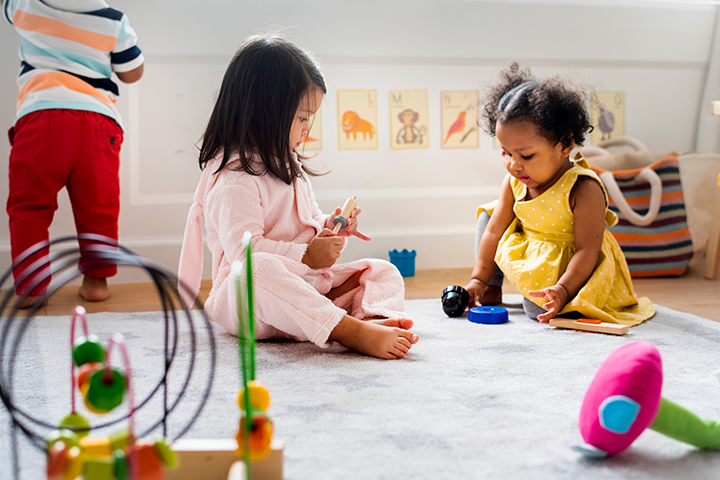Montessori Classrooms
Parallel Play: How to Apply it in Your Child Development
Montessori parents and educators understand that play is essential for a child’s growth and development. As children progress through different developmental stages of play, it provides valuable insights into their minds. One of the earliest developmental stages is parallel play, which usually starts at the age of two or three. Parallel play involves children engaging in similar activities in the same space without explicitly acknowledging each other’s presence or playing together.
But why do children engage in parallel play? How is it beneficial, and what can adults learn from it? These are crucial questions that parents and educators need to understand to support children’s growth and development. By exploring the nature of parallel play, we can gain a deeper insight into children’s social, emotional, and cognitive development.

What is parallel play?
Parallel play is a term used to describe a type of play during childhood where children engage in individual activities near each other but do not interact directly with one another. This type of play is common in young children, usually between the ages of two and three years old, and is considered an important part of their social and emotional development.
During parallel play, children may be playing with toys or engaging in activities near each other, but they are not interacting with each other directly. For example, two children may be playing with blocks next to each other, but they are not building a structure together or communicating with each other about their play. While it may seem like children are not interacting with each other during parallel play, they are actually learning important social and emotional skills. Parallel play allows children to explore their own interests and ideas while observing and learning from others. They also learn how to share and take turns, develop their imagination and creativity, and build their self-confidence.
It is important to note that parallel play is not the same as playing alone. When children play alone, they engage in solitary activities without any social interaction. Parallel play, on the other hand, involves social proximity and the opportunity to observe and learn from others. Parents and caregivers can support parallel play by providing a safe and stimulating environment for children to explore and play in. This can include providing a variety of toys and materials for children to play with, setting up playdates with other children, and encouraging children to engage in independent play.
It is also important for parents and caregivers to understand that parallel play is a natural part of childhood development and should not be discouraged or interrupted. While it may be tempting to try and encourage children to play together, it is important to allow them to explore their own interests and develop their own social skills at their own pace.

What are the benefits of Parallel Play?
Parallel play is a term used to describe a type of play where children engage in independent play activities alongside their peers without necessarily interacting with them. This form of play is common among young children, and it is believed to have some significant benefits. In this article, we will be exploring the benefits of parallel play for children and why it is an essential aspect of early childhood development.
1. Promotes Independence
One of the significant benefits of parallel play is that it promotes independence in children. When children engage in parallel play, they learn to play independently without relying on their peers for entertainment. This independence helps to build their confidence and self-esteem, which is crucial for their overall development.
2. Encourages Creativity
Parallel play provides children with the opportunity to explore their imagination and creativity. Children who engage in parallel play can come up with different ideas and ways to play without necessarily following their peers’ lead. This type of play encourages children to think outside the box and come up with unique ways to play.
3. Develops Social Skills
While parallel play is independent play, it still provides children with the opportunity to observe and learn from their peers. Children who engage in parallel play learn to share, take turns, and respect each other’s personal space. These skills are essential for building strong social relationships and are crucial for children’s future interactions with their peers.
4. Builds Language Skills
Parallel play also provides children with the opportunity to develop their language skills. Children who engage in parallel play often communicate with their peers, even if it’s just to ask for a toy or comment on what their peers are doing. This interaction helps to build their vocabulary and communication skills, which is essential for their overall language development.
5. Develops Cognitive Skills
Parallel play also helps to develop children’s cognitive skills. Children who engage in parallel play learn to focus on a task and problem-solve independently. This type of play also helps to improve their attention span and memory skills, which is crucial for their academic success.

How Can Parents Support Their Child during Parallel Play?
By supporting your child in parallel play, you can help them to improve their academic and social abilities.
Here are some ways you can support your child in learning through parallel play:
1. Encourage your child to play with others
Encouraging your child to play with other children is one of the most important things you can do to support their learning through parallel play. When your child plays with others, they are able to learn from their peers and develop important social skills. Encourage your child to invite friends over to play or join them in group activities.
2. Provide a variety of toys and games
Providing your child with a variety of toys and games can help them to develop different skills and interests. Make sure to provide toys and games that are age-appropriate and that your child finds engaging. This will help to keep them interested and motivated to learn.
3. Participate in play activities with your child
Participating in play activities with your child can be a great way to support their learning. By playing alongside your child, you can model appropriate behavior and provide guidance when needed. This can help your child to learn how to interact with others and develop important cognitive and social skills.
4. Create a positive and supportive environment
Creating a positive and supportive environment is essential for supporting your child’s learning through parallel play. Provide plenty of praise and encouragement for your child’s efforts and accomplishments. This will help to build their confidence and motivate them to continue learning.
5. Allow for independent play
While playing with others is important, it is also important for your child to have time for independent play. This allows them to develop their own interests and skills, and to learn at their own pace. Provide a safe and stimulating environment for your child to play independently.
Supporting your child in learning through parallel play is essential for their academic and social development. By encouraging your child to play with others, providing a variety of toys and games, participating in play activities with your child, creating a positive and supportive environment, and allowing for independent play, you can help your child to develop important cognitive and social skills that will benefit them throughout their life.
>> Read More: Associative Play: A Guide to Enhancing Your Child’s Development
